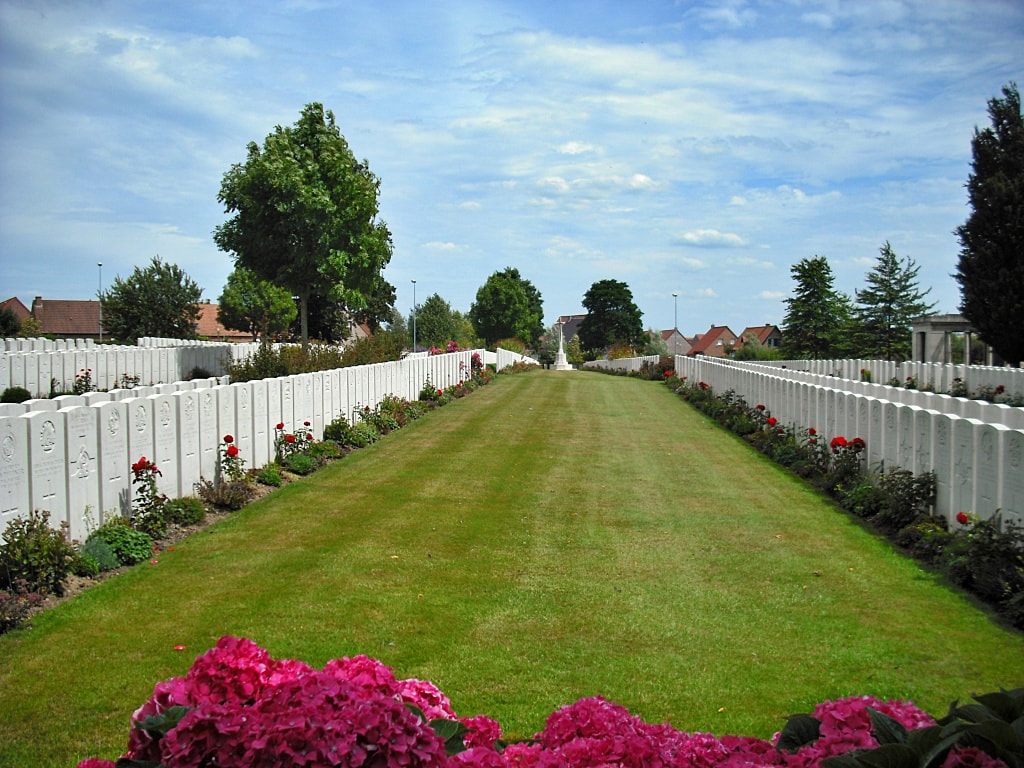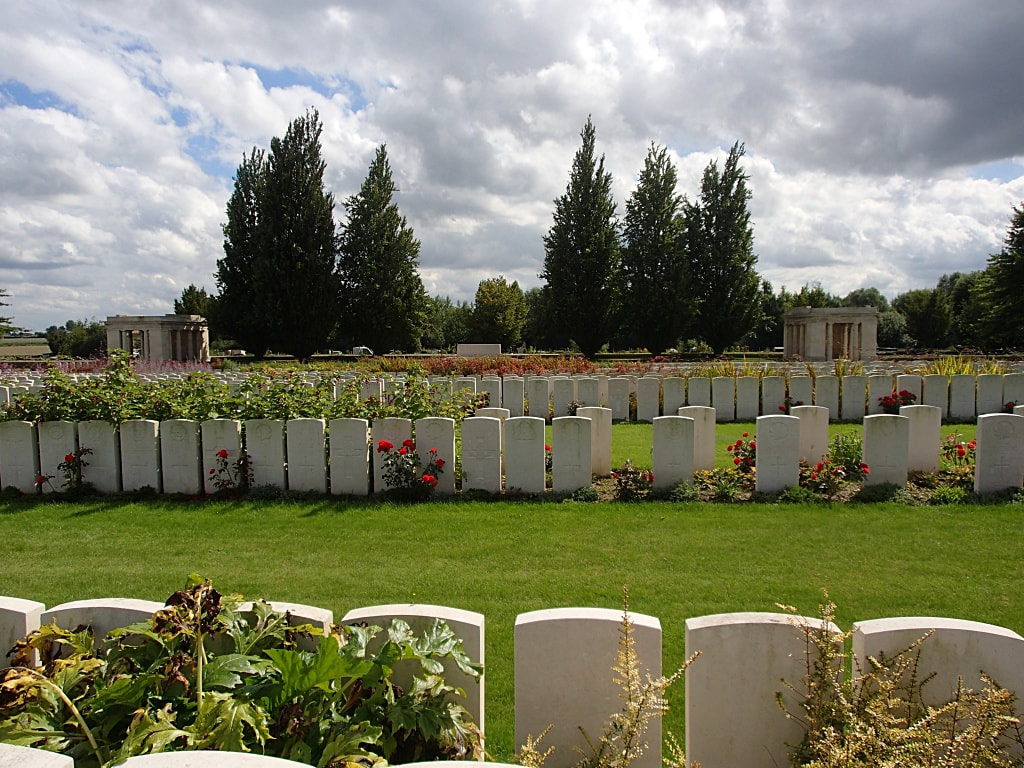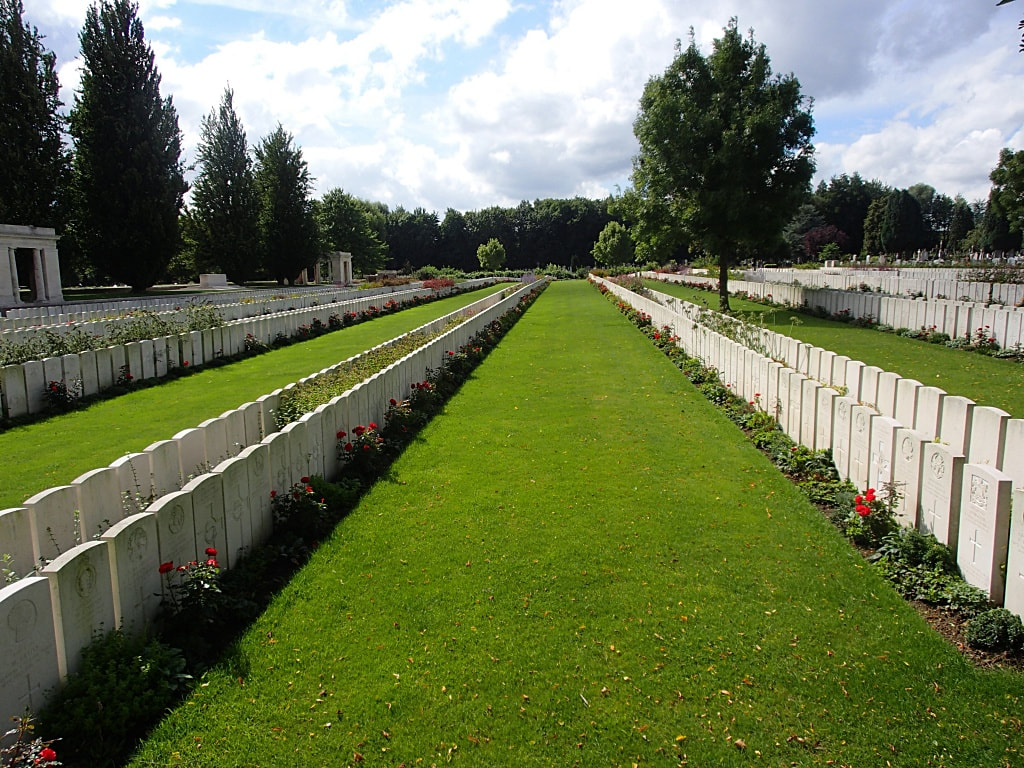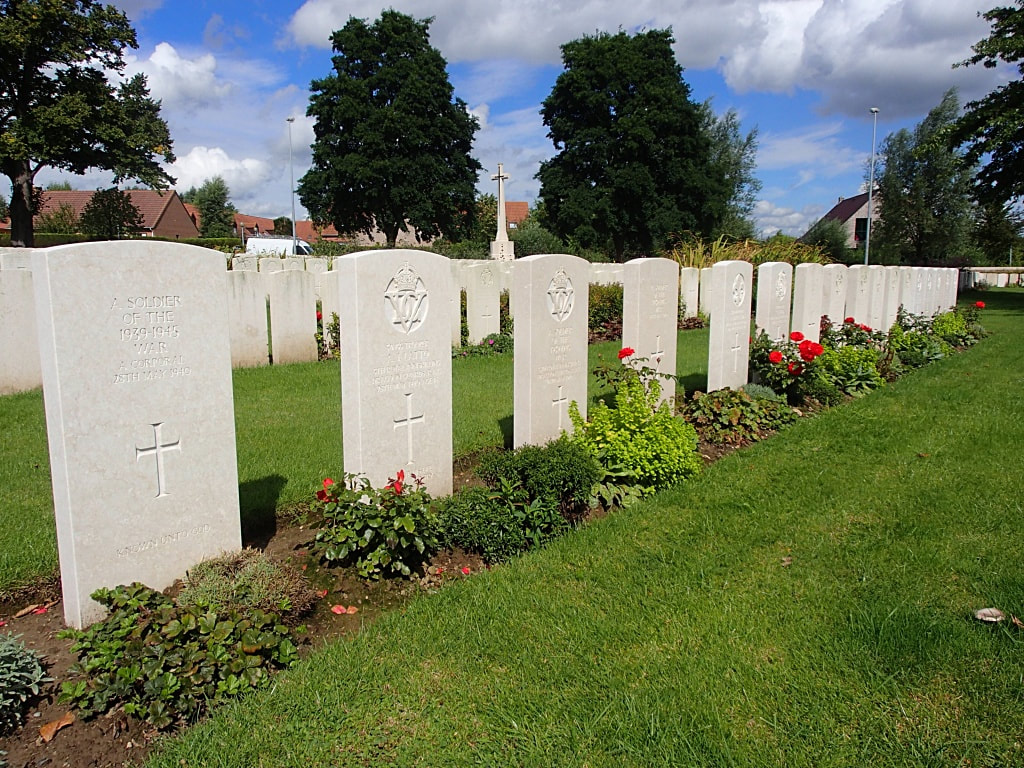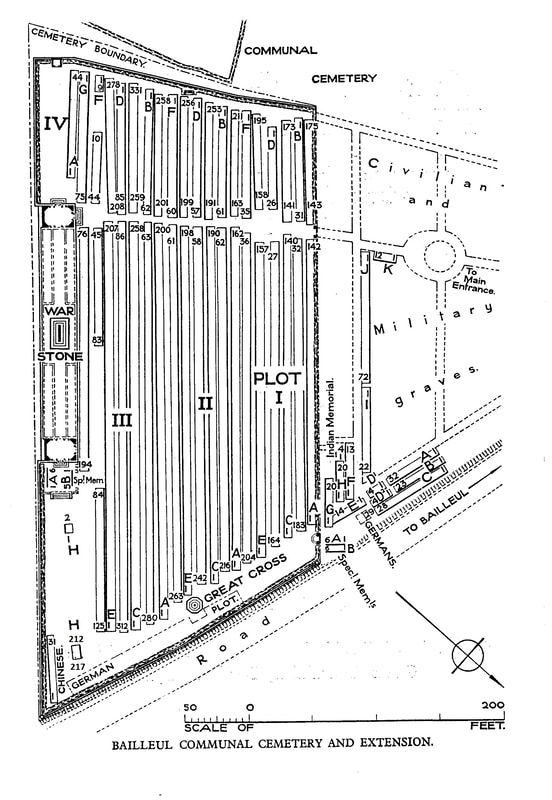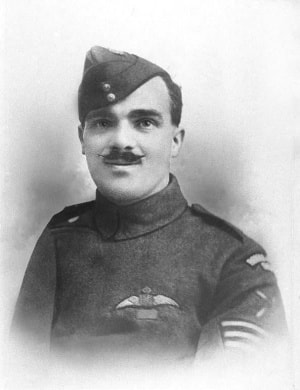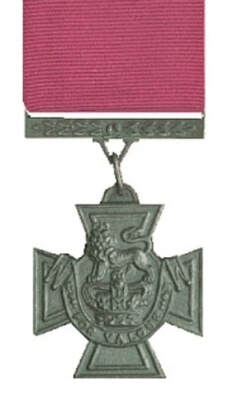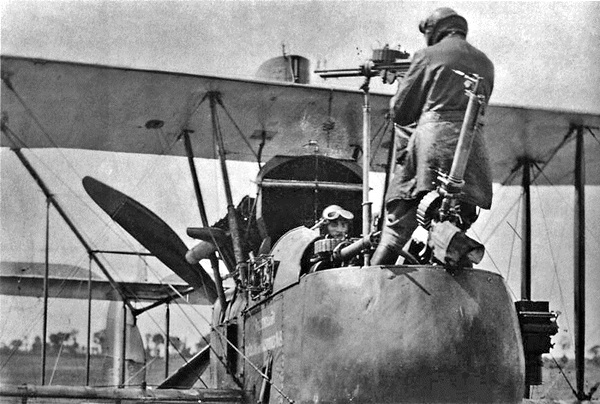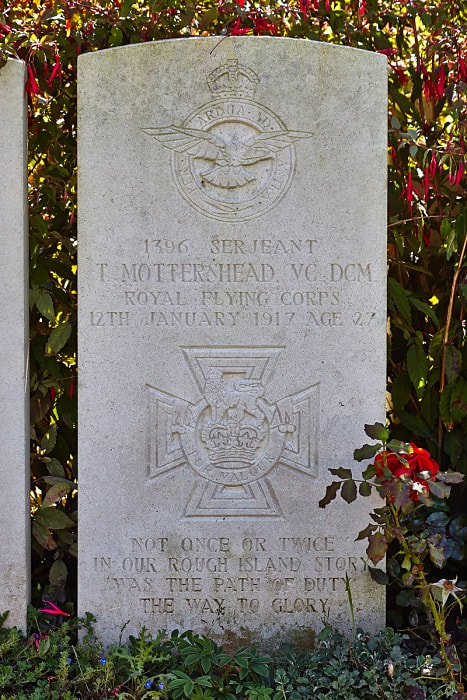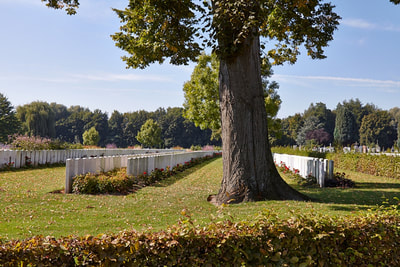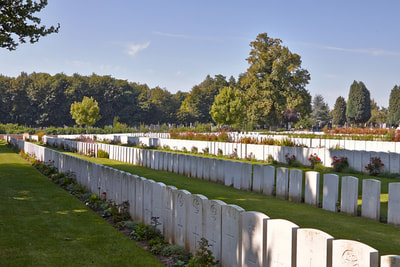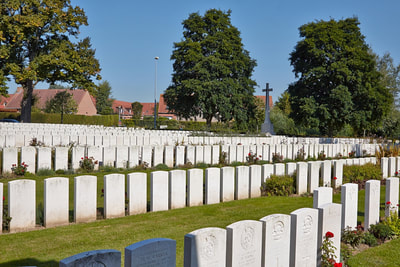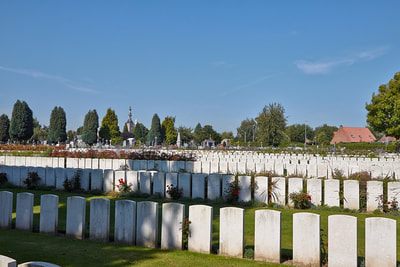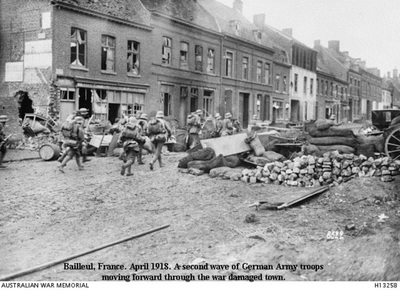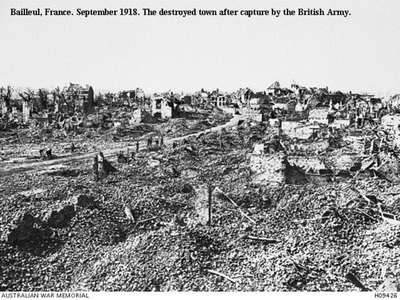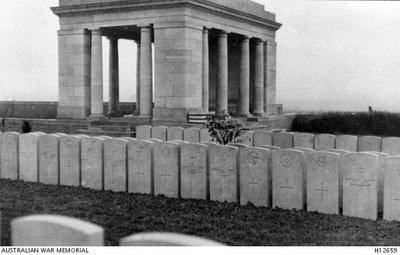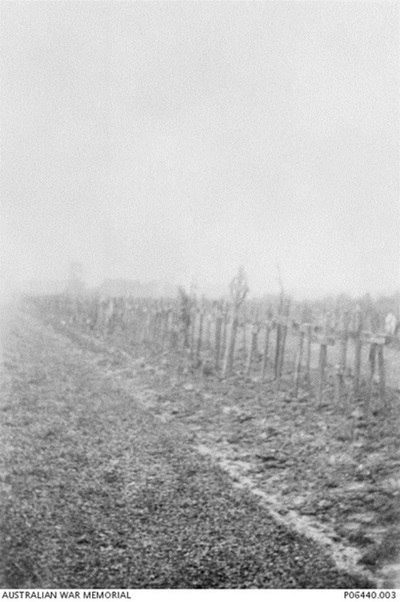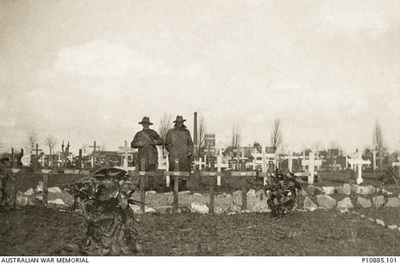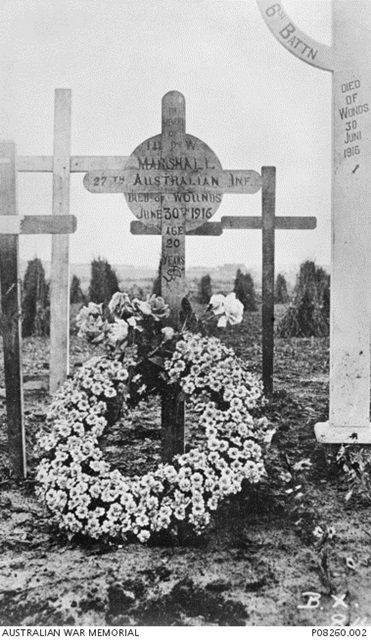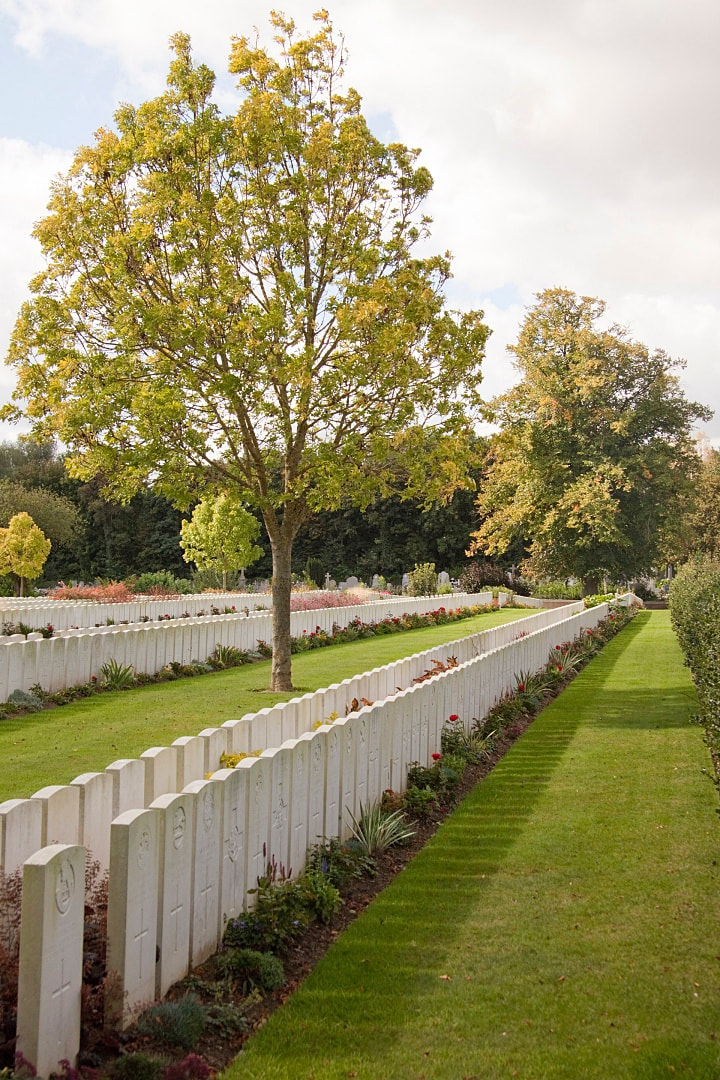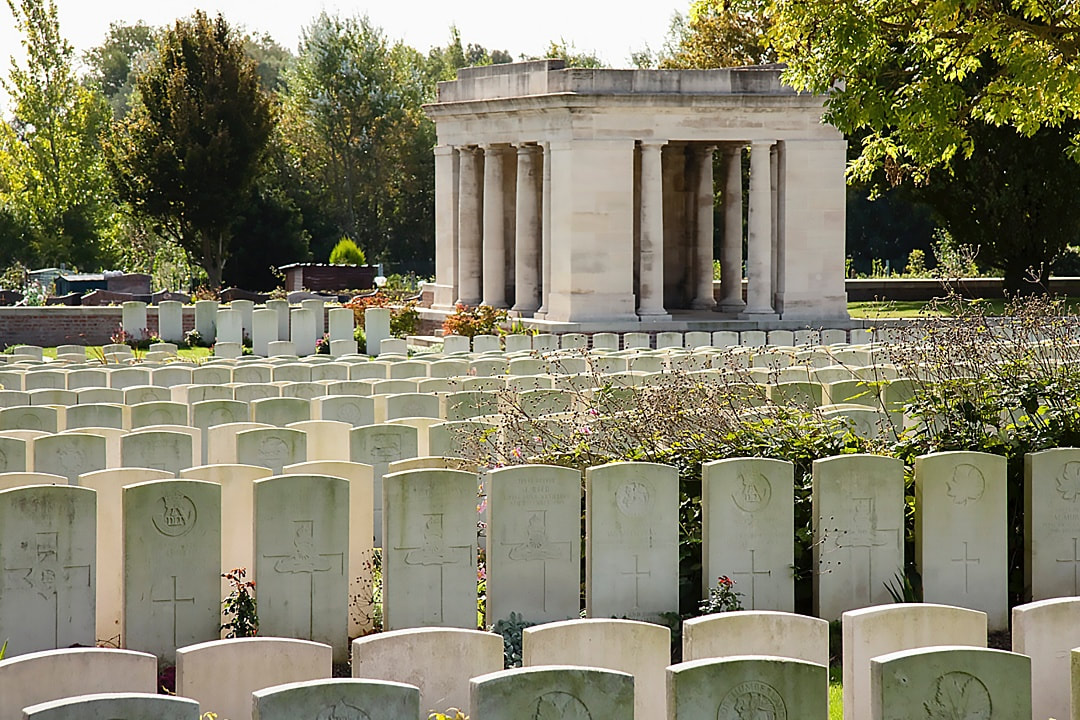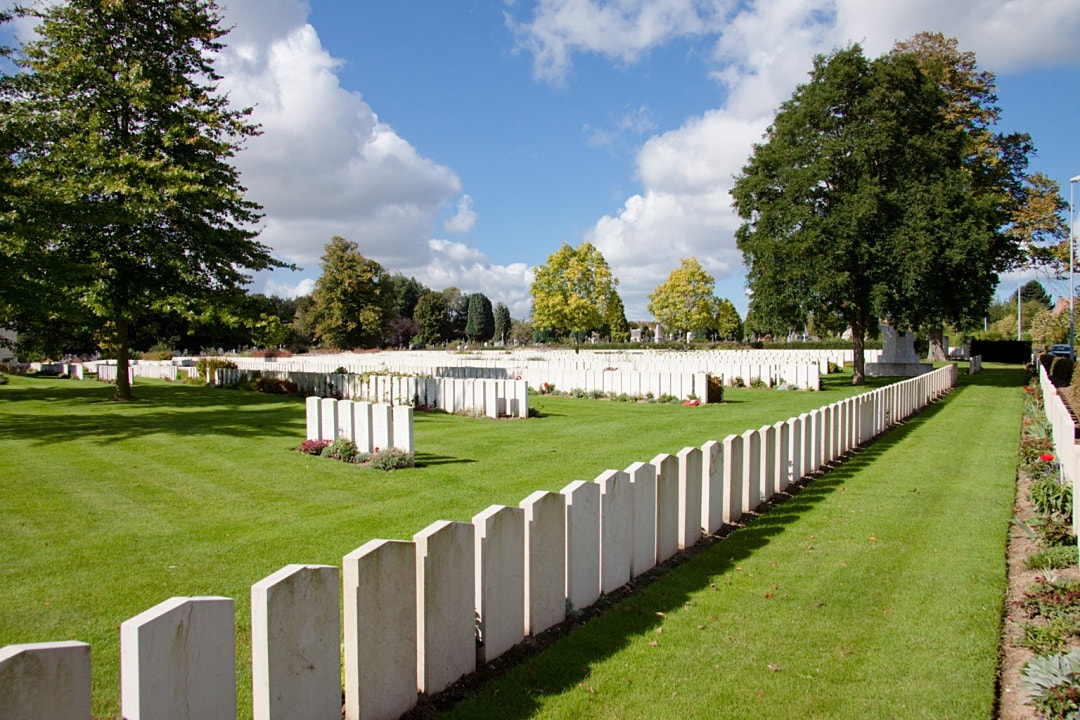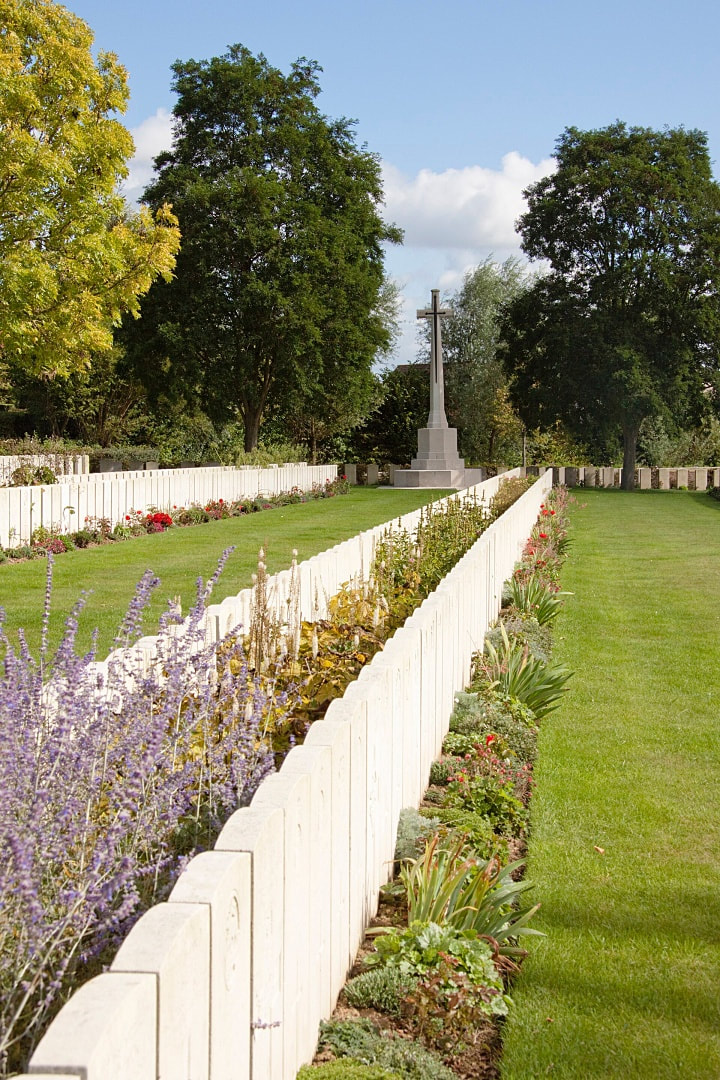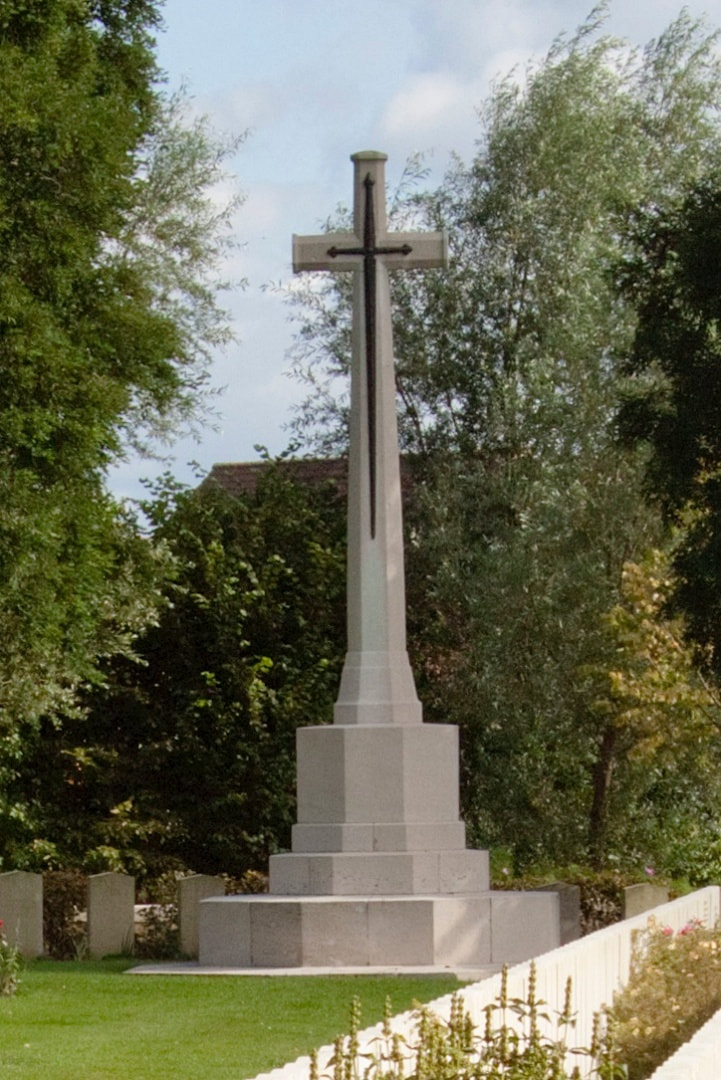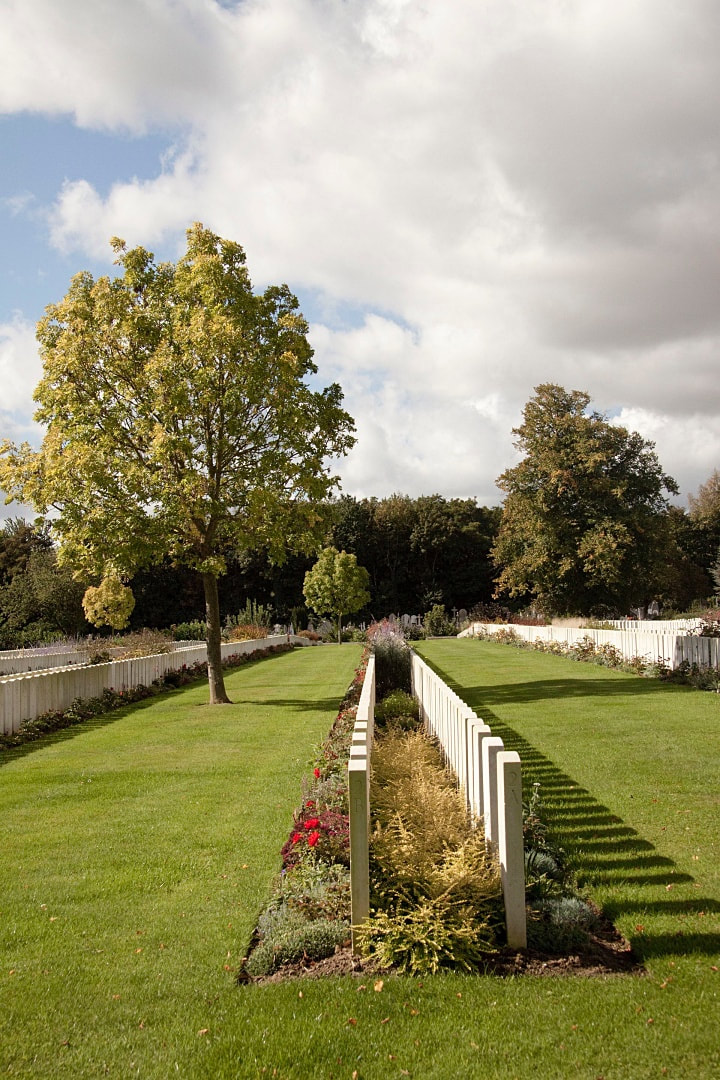BAILLEUL COMMUNAL CEMETERY EXTENSION
Nord
France
GPS Coordinates Latitude: 50.73854 Longitude: 2.74352
Roll of Honour
Location Information
Bailleul is a large town in France, near the Belgian border, 14.5 Kms south-west of Ieper and on the main road from St. Omer to Lille.
From the Grand Place, take the Ieper road and 400 metres along this road is a sign indicating the direction of the cemetery. Turn right into a small road and follow for approximately 400 metres. The cemetery is on the right and the Communal Cemetery Extension is at the bottom end.
Visiting Information
Opening hours :
1st APRIL to 31st OCTOBER : From 8.00 to 19.30
1st NOVEMBER to 31st MARCH : From 8.00 to 17.30
Historical Information
Bailleul was occupied on 14 October 1914 by the 19th Brigade and the 4th Division. It became an important railhead, air depot and hospital centre, with the 2nd, 3rd, 8th, 11th, 53rd, 1st Canadian and 1st Australian Casualty Clearing Stations quartered in it for considerable periods. It was a Corps headquarters until July 1917, when it was severely bombed and shelled, and after the Battle of Bailleul (13-15 April 1918), it fell into German hands and was not retaken until 30 August 1918.
The earliest Commonwealth burials at Bailleul were made at the east end of the communal cemetery and in April 1915, when the space available had been filled, the extension was opened on the east side of the cemetery. The extension was used until April 1918, and again in September, and after the Armistice graves were brought in from the neighbouring battlefields and the following burial grounds:-
PONT-DE-NIEPPE GERMAN CEMETERY, on the South side of the hamlet of Pont-de-Nieppe, made in the summer of 1918. It contained German graves (now removed) and those of a soldier and an airman from the United Kingdom.
RENINGHELST CHINESE CEMETERY, in a field a little South of the Poperinghe-Brandhoek road, where 30 men of the Chinese Labour Corps were buried in November 1917-March 1918.
BAILLEUL COMMUNAL CEMETERY contains 610 Commonwealth burials of the First World War; 17 of the graves were destroyed by shell fire and are represented by special memorials.
Total Burials: 619.
Identified Casualties: United Kingdom 575, Canada 21, Germany 8, India 4. Total 608.
BAILLEUL COMMUNAL CEMETERY EXTENSION contains 4,403 Commonwealth burials of the First World War; 11 of the graves made in April 1918 were destroyed by shell fire and are represented by special memorials. There are also 17 Commonwealth burials of the Second World War and 154 German burials from both wars.
Total Burials: 4,580
World War One Identified Casualties: United Kingdom 3,280, Australia 394, Canada 291, New Zealand 252, Germany 99. India 5, South Africa 1. Total 4,322.
World War Two Identified Casualties: United Kingdom 13, Germany 9. Total 22.
Both the Commonwealth plot in the communal cemetery and the extension were designed by Sir Herbert Baker and Noel Ackroyd Rew
In the centre of the town is a stone obelisk erected by the 25th Division as their Memorial on the Western front, recalling particularly the beginning of their war service at Bailleul and their part in the Battle of Messines. The town War Memorial, a copy of the ruined tower and belfry of the Church of St. Vaast, was unveiled in 1925 by the Lord Mayor of Bradford, the City which had "adopted" Bailleul.
Dedications
18490 Lance Corporal Robert Pattinson, 8th Bn. Border Regiment, 14th June 1917, aged 21.
The dead are never gone. They are always here holding our hands.
An Uncle we didn't know but are very proud of Fred and Jenifer Pattinson
1396 Sergeant Thomas Mottershead, V. C. & D. C. M.
20th Squadron, Royal Flying Corps
12th January 1917, aged 27.
Plot III. A. 126.
Son of Thomas and Lucy Mottershead, of Widnes; husband of Lilian Medlicott Mottershead, of 31, Lilac Avenue, Widnes, Lancs.
His headstone bears the inscription "Not Once Or Twice In Our Rough Island Story Was The Path Of Duty The Way To Glory"
Citation: An extract from "The London Gazette," No. 29937, dated 9th Feb., 1917, records the following:- "For most conspicuous bravery, endurance and skill, when attacked at an altitude of 9,000 feet; the petrol tank was pierced and the machine set on fire. Enveloped in flames, which his Observer, Lt. Gower was unable to subdue, this very gallant soldier succeeded in bringing his aeroplane back to our lines, and though he made a successful landing, the machine collapsed on touching the ground, pinning him beneath wreckage from which he was subsequently rescued. Though suffering extreme torture from burns, Serjt. Mottershead showed the most conspicuous presence of mind in the careful selection of a landing place, and his wonderful endurance and fortitude undoubtedly saved the life of his Observer. He has since succumbed to his injuries."
Sergeant Mottershead's Distinguished Conduct Medal
One of his first operations was low-level bombing raid on a German anti-aircraft battery which he successfully destroyed. On 22 September, with Second Lieutenant C. Street as observer he bombed the railway station at Samain, destroying one ammunition train and strafing another. While climbing away from the target, their aircraft was attacked by a Fokker scout. Accounts of the engagement indicate that it was Mottershead's skilful manoeuvring which enabled Street to shoot the enemy aircraft down. For this action and other displays of gallantry, Sergeant Mottershead was awarded the Distinguished Conduct Medal and promoted to the rank of Flight Sergeant.
Above picture is the flying goggles worn by Sergeant Thomas Mottershead (20 Squadron, Royal Flying Corps) on his final mission on the Western Front during the First World War. Flying over Ploegsteert (Belgium) on 7 January 1917 his FE2d aircraft was attacked by enemy scouts, hit and caught fire. During the combat Sergeant Mottershead manoeuvred his machine in such a way as to prevent the flames harming his observer, Lieutenant Gower, and although in great pain, flew the aircraft safely back over British lines. However, the badly damaged FE2d collapsed on landing, throwing Lieutenant Gower clear, but trapping Mottershead in the burning wreckage. He died in hospital at Bailleul (France) on 12 January 1917 as result of his injuries. For his gallant and selfless action in saving the life of his observer Sergeant Mottershead was awarded the Victoria Cross. His was the only Victoria Cross to be awarded to a Non-Commissioned Officer (NCO) during the First World War
Sergeant Mottershead was piloting a Farman Experimental (D) Bi-plane when he was attacked, the picture above shows an F. E.2d observer demonstrating the use of the rear-firing Lewis gun, which required him to stand on the rim of his cockpit. Note the camera, and the (non-standard) extra Lewis gun for the pilot.
The final F. E. 2 production model was the F.E.2d (386 built) which was powered by a Rolls-Royce Eagle engine with 250 hp (186 kW). While the more powerful engine made little difference in maximum speed, especially at low altitude, it did improve altitude performance, with an extra 10 mph at 5,000 ft. The Rolls-Royce engine also improved payload, so that in addition to the two observer's guns, an additional one or two Lewis guns could be mounted to fire forward, operated by the pilot. At least two F.E.2bs were fitted with 150 hp (110 kW) RAF 5 engines (a pusher version of the RAF 4 engine) in 1916, but no production followed. The F.E.2h was an F.E.2 powered by a 230 hp (170 kW) Siddeley Puma. The prototype (A6545) was converted in February 1918 by Ransomes, Sims & Jefferies in the hope of producing a night fighter with superior performance. When tested at Martlesham Heath, however, it proved to be much slower than expected, reaching 81.5 mph (131.2 km/h) instead of the predicted 100 mph (160 km/h), little better than the F.E.2b. Despite this, three more aircraft were converted to F.E.2h standard, these being fitted with a six-pounder (57 mm) Davis gun mounted to fire downwards for ground attack purposes.
Shot at Dawn

17790 Lance Corporal
William Alfred Moon
11th Bn. Cheshire Regiment, executed for desertion on 21st November 1916, aged 20.
Plot III. A. 219.
Son of Mrs. M. Moon, of 5, Blue Coat School, Chester.
He volunteered in Nov 1914, going to France in Sept 1915, where he was in due course promoted Lance Corporal. But in 1916, he went missing for 5 months, the background to which is as follows.
On 31 Dec 1915, a shell burst close to him & blew part of a comrade’s head & brains into his face. Moon was taken to hospital, then discharged, but was continually going sick for about 10 weeks thereafter. He was in hospital again from 1 to 14 May; readmitted on 15 May; discharged on 26 May; & noticed to be ‘in a nervous condition’ on 28 May.
On 29 May, Moon was missing from roll-call; next seen from time to time in July in St Pol, where he used a false name; finally found there in a YMCA hut by the RMP; & since he was wearing no badges, was arrested — said then to be in good health & speaking rationally.
At trial, Moon made an unsworn statement, saying that ‘I am not responsible for my actions’; & that he had been ‘in a queer state’ since the end of 1915, often not knowing what he was doing.
During his absence, the CO had written to his mother, mentioning that her son had twice suffered from shell-shock, & might now be suffering from loss of memory. The court called the battalion MO, who however said that he had only once seen Moon (then suffering from acute laryngitis); had no knowledge of Moon’s medical history; & had never examined Moon as to his mental condition. The court made no attempt to obtain evidence from the doctor who had treated the accused in May 1916.
After conviction, the CSM said that he had never any trouble with Moon, who was ‘one of the best soldiers’. Moon’s good character was confirmed by the CO who — alike with the Brigade commander — did not consider execution necessary for discipline in the battalion. But the Divisional & Army commanders disagreed. (Corns, pp. 319-323)
William Alfred Moon
11th Bn. Cheshire Regiment, executed for desertion on 21st November 1916, aged 20.
Plot III. A. 219.
Son of Mrs. M. Moon, of 5, Blue Coat School, Chester.
He volunteered in Nov 1914, going to France in Sept 1915, where he was in due course promoted Lance Corporal. But in 1916, he went missing for 5 months, the background to which is as follows.
On 31 Dec 1915, a shell burst close to him & blew part of a comrade’s head & brains into his face. Moon was taken to hospital, then discharged, but was continually going sick for about 10 weeks thereafter. He was in hospital again from 1 to 14 May; readmitted on 15 May; discharged on 26 May; & noticed to be ‘in a nervous condition’ on 28 May.
On 29 May, Moon was missing from roll-call; next seen from time to time in July in St Pol, where he used a false name; finally found there in a YMCA hut by the RMP; & since he was wearing no badges, was arrested — said then to be in good health & speaking rationally.
At trial, Moon made an unsworn statement, saying that ‘I am not responsible for my actions’; & that he had been ‘in a queer state’ since the end of 1915, often not knowing what he was doing.
During his absence, the CO had written to his mother, mentioning that her son had twice suffered from shell-shock, & might now be suffering from loss of memory. The court called the battalion MO, who however said that he had only once seen Moon (then suffering from acute laryngitis); had no knowledge of Moon’s medical history; & had never examined Moon as to his mental condition. The court made no attempt to obtain evidence from the doctor who had treated the accused in May 1916.
After conviction, the CSM said that he had never any trouble with Moon, who was ‘one of the best soldiers’. Moon’s good character was confirmed by the CO who — alike with the Brigade commander — did not consider execution necessary for discipline in the battalion. But the Divisional & Army commanders disagreed. (Corns, pp. 319-323)
26028 Private, John Rogers, 2nd Bn. South Lancashire Regiment, executed for desertion on 9th March 1917. Plot III. A. 3. Husband of Harriett Rogers, of 34, Luke Street, Liverpool.
Unusually, he deserted when actually serving in the trenches. (Putkowski, p. 164)
2408 Private, William W. Roberts, 4th Bn. Royal Fusiliers, executed for desertion on 29th May 1916. Plot II. B. 110.
He was severely wounded during an attack in the Ypres Salient, one of the 369 casualties suffered by his battalion that day. Being returned in due course to his battalion — which was still in the Salient — Roberts slipped away 5 days later from the front line trenches but remained in the vicinity of Ypres for quite a while before he was arrested. He escaped from confinement, only to be re-arrested soon afterwards. At trial his commanding officer described him as a good & plucky soldier who had volunteered for dangerous tasks on several occasions, but the death sentence was confirmed a week later. (Putkowski, p. 82)
Unusually, he deserted when actually serving in the trenches. (Putkowski, p. 164)
2408 Private, William W. Roberts, 4th Bn. Royal Fusiliers, executed for desertion on 29th May 1916. Plot II. B. 110.
He was severely wounded during an attack in the Ypres Salient, one of the 369 casualties suffered by his battalion that day. Being returned in due course to his battalion — which was still in the Salient — Roberts slipped away 5 days later from the front line trenches but remained in the vicinity of Ypres for quite a while before he was arrested. He escaped from confinement, only to be re-arrested soon afterwards. At trial his commanding officer described him as a good & plucky soldier who had volunteered for dangerous tasks on several occasions, but the death sentence was confirmed a week later. (Putkowski, p. 82)



